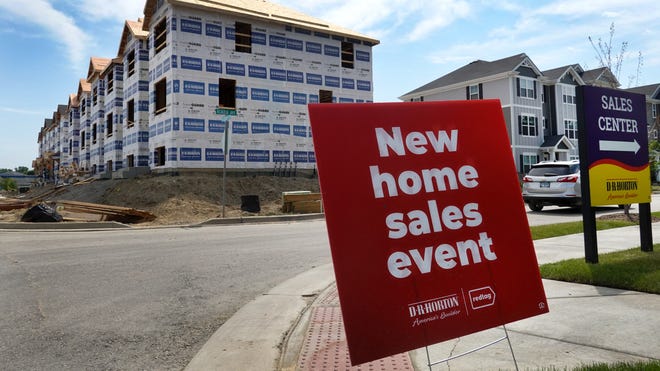
Five years ago, when a real estate agent advised my wife and me to make an offer on a house we had seen only once − at night − and were unsure about, I thought she was being ridiculous. Today, I concede that she was being pragmatic because buyers significantly outnumbered sellers.
We bought another home before it was listed, happening to spot the “Coming Soon” sign out front. That was my preview of the housing shortage. Then COVID-19 supercharged the national housing crisis.
You may know the rule of thumb not to spend more than 30% of your income on housing. Redfin calculated that only 15.5% of homes bought last year would have a mortgage costing less than 30% of local median income, a record well below the pre-pandemic norm.
A new report from Harvard’s Joint Center for Housing Studies found that in 2022, a record half of U.S. renters were “cost burdened,” spending more than 30% of their income on rent and utilities. About 27% of renter households spent more than half of their income on housing.
The root cause of this financial hardship is a shortage of homes, although some housing advocates question or deny that reality. But the housing shortage is a literal shortage. We can see it from various pieces of evidence.
We can fix homelessness:California knows the way to end homelessness. It’s time to find the will.
Housing price index is at near record high
America built far fewer homes in recent years. U.S. private home construction crashed before the 2008 mortgage crisis (measured in total units). Only in late 2021 did it climb back up to its pre-Great Recession peak.
Homebuilding is rebounding, but we have a lot of catching up to do. The Case-Shiller housing price index sits near an all-time high.
The median age of first-time homebuyers also is near a record high, at 35.
Can Gen Z, millennials buy homes?Buying a home was a dream for millennials like me. For many, it won’t be possible.
Investment firms have owned many multifamily buildings for decades. They now are buying a significant number of houses because they expect a continued shortage to boost those properties’ values.
Economists argue about inflation and minimum wage laws, but they overwhelmingly agree we have a housing shortage. “Place the Blame Where It Belongs,” declared a recent Urban Institute report on the shortage. Economists are still figuring out how to measure it, but various estimates place the national shortage of homes in a broad range, from 4 million to 20 million.

Rising rents trigger increase in people without stable housing
It was a moment, not a number, that finally convinced me of the housing shortage. I started an all-volunteer housing advocacy group in 2021 and about a year later was invited to tour a homeless shelter. A staff member explained that rising rents had increased the local population without stable housing, and that the shelter struggled to find available homes to place its clients in.
I have since heard the same thing from staff at other shelters in my state. I have also heard chilling stories about residents of my city living in unsafe, overcrowded conditions.
Low supply lets landlords jack up rents. It prevents people from leaving abusive partners. It forces California college students to sleep in their cars.
The housing shortage is all too real. Only building many more homes will make housing affordable again.

Luca Gattoni-Celli is a Young Voices contributor and the founder of YIMBYs of Northern Virginia. Follow him on X @TheGattoniCelli
